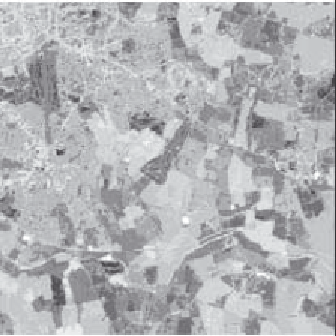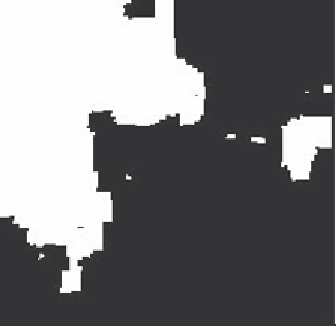Image Processing Reference
In-Depth Information
8.2
What is texture?
Texture is actually a very nebulous concept, often attributed to human perception, as either
the feel or the appearance of (woven) fabric. Everyone has their own interpretation as to
the nature of texture; there is no mathematical definition for texture, it simply exists. By
way of reference, let us consider one of the dictionary definitions Oxford (1996):
texture
n
.,
&
v.t.
1.
n
. arrangement of threads etc. in textile fabric. characteristic feel
due to this; arrangement of small constituent parts, perceived structure, (
of
skin, rock,
soil, organic tissue, literary work, etc.); representation of structure and detail of
objects in art; . . .
That covers quite a lot. If we change 'threads' for 'pixels' then the definition could apply
to images (except for the bit about artwork). Essentially, texture can be what we define it
to be. Why might we want to do this? By way of example, analysis of remotely sensed
images is now a major application of image processing techniques. In such analysis, pixels
are labelled according to the categories of a required application, such as whether the
ground is farmed or urban in land-use analysis, or water for estimation of surface analysis.
An example of a remotely sensed image is given in Figure
8.1
(a) which is of an urban area
(in the top left) and some farmland. Here, the image resolution is low and each pixel
corresponds to a large area of the ground. Square groups of pixels have then been labelled
either as urban, or as farmland, according to their texture properties as shown in Figure
8.1
(b) where black represents the area classified as urban and white is for the farmland. In
this way we can assess the amount of area that urban areas occupy. As such, we have used
real
textures to label pixels, the perceived textures of the urban and farming areas.
As an alternative definition of texture, we can consider it as a database of images that
researchers use to test their algorithms. Many texture researchers have used a database of
(a) Remotely sensed image
(b) Classification result
Figure 8.1
Example of texture analysis



















